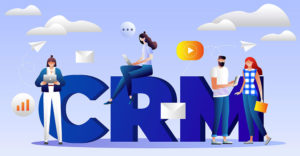Every business claims to make customer service a top priority. However, in today’s highly competitive business-to-business software industry, it’s not enough to staff a call center and sit back and wait for customers to reach out when they need you — it’s imperative that you take the initiative.
When customers have so many solution vendors to choose from, service becomes a strategic differentiator to set your company apart from the crowd with proactive, customer-centric strategies. It’s a way for you to show customers that you are on their team and that their satisfaction is a priority over the long haul, far beyond the sale.
Unfortunately, many subscription software — Software as a Service, or SaaS — companies don’t live this philosophy. They focus on closing the deal and getting the customer on board with an eye toward driving annual recurring revenue. While there’s nothing wrong with using ARR as a key performance indicator, companies too often prioritize customer acquisition over retention in setting their ARR goals.
Retention, Retention, Retention
Yet, as marketers, we know that it’s 25X easier and less expensive to retain a customer than it is to acquire a new one. Sometimes, even a small increase in retention can drive a big gain in profitability, especially if you’re able to leverage cross-sell and upsell opportunities that add value for your customers.
That’s why providing thoughtful, attentive customer service is arguably the most important factor in customer retention. Even if your product is the best and offers the highest return on investment, if customers can’t get the help they need when they need it, they’ll be easily swayed to look for another vendor — even if the switch costs more.
They might never complain to you about your lack of attention and failure to serve their needs, but they will mention it to their colleagues or on social media. The reputational damage from just one instance of negative feedback can be hard to quantify, but it certainly can have long-lasting and far-reaching negative impacts on your future opportunities with new customers.
It’s critical to differentiate your company from the crowd and give your customers the outstanding experience they expect from a vendor after the sale. Following are 10 strategies that can help you keep the service in SaaS, and drive maximum retention and ARR.
1. Design a customer success program that is truly customer-centric. That might sound obvious, but you’d be surprised how many companies focus their customer programs on their own priorities — what they need to happen at each step of the customer journey.
Instead, flip the script on your approach and think about what your customers need at each step. What information do they require? What are their concerns or challenges at each stage? What resources can you offer to address those questions?
When you structure your process around your customers, it immediately positions them at the center of the universe, which will be reflected in every interaction.
2. Focus on your customers’ success metrics. Many organizations create customer service metrics around driving efficiencies in their own organization: reducing the number of times a customer contacts support, shortening call times, pushing customers to self-service options to cut down on personnel costs. That’s not success, though. That’s you trying to get away with doing the bare minimum to save money.
Instead, find out what your customers need, and measure and incentivize staff performance based on those priorities. Certainly, your customers don’t want to spend 20 minutes on the phone when five would solve the problem. Put yourself in their shoes. They want a fast, effective resolution that leaves them feeling satisfied and confident that they’re getting the biggest bang for their buck with your software.
Build metrics around customer response time, time to resolution, satisfaction with service, rates of adoption, and ROI of your platform.
3. Align your organization with customers’ priorities. Once you know what your customers need, your entire organization should be aligned around those priorities.
From sales, marketing and service to human resources, product development and accounting, every applicable decision should center on what best serves the customer. When this is baked into your culture and operations, the entire organization can set clear and measurable benchmarks around what “success” looks like.
4. Bring service into the sale. Most software sales teams tend to focus on the features and capabilities of their solution. The truth is, those same features likely are also available in your competitors’ offerings. Once the deal is done, the salesperson often disappears, having moved on to the next prospect or hot lead, leaving customers on their own. This is where relationships easily can fall apart.
Instead, use the sales process as an opportunity to introduce your customer support team and show how they will pick up the torch after the deal is signed to help maximize adoption and customer ROI. When customers see there’s a strong support system that’s there for the long haul, it’s a strong differentiator over “call this number if you have questions.”
5. Aid in change management. Adopting any new system or solution can be scary and difficult, and some organizations are just naturally change averse. That means even if your solution is the best and easiest to use on the market, your customers may still struggle with implementation because their people are creatures of habit.
As a vendor, you have a great opportunity to help drive a shift in culture toward one that’s more accepting of change now and in the future. By helping with this big-picture strategy, you can demonstrate that your company cares about your customers’ long-term success.
6. Consult on best practices. As a vendor who’s worked with many businesses, you’ve no doubt built an incredible wealth of knowledge about what works and what doesn’t, even beyond your own solution. Go deep on understanding your customers’ current business processes and listen carefully to the challenges they face.
By suggesting changes and solutions that can help address those issues, you become more than just a vendor; you become a trusted advisor who can give them more than just a product.
7. Help customers drive ROI. Customer success goes far beyond providing help when customers ask for it. In fact, many don’t even know when they need help. They may not have a problem, per se, but it could be that they’re just not making full use of your solution.
Reaching out proactively with educational materials on little-known features or “did you know” email newsletters can help your customers get the most ROI, and that positions you as a partner, not just a provider.
8. Give customers plenty of channels. If you ask five customers how they want to contact your team, you’ll probably get five different answers. Some may want self-service resources like learning modules or on-demand videos, for example, while others prefer a number they can call to talk to a real human.
What about customers who can’t call? Say they work in an airport or coffee shop, and it’s too noisy. An online chat would be a great solution.
Providing multichannel support is a must, so your customers can contact you in the way that works best for them. You never want your customers to feel like they can’t get in touch or don’t know how to. With modern technology, providing a multichannel contact solution is affordable and easy, and it’s well worth the investment.
9. Bring customers together. In competitive industries, your customers can become quite isolated. Sure, they might attend the same industry trade events, but they stick close to their own booths and their own teams.
As a software vendor, hosting a user conference or other user event can be a great way to bring them together around a specific topic — your solution — to help them learn, network, and share ideas for how to better leverage your tools. This can be as simple as a monthly conference call, where users can call in to ask questions, or quarterly or annual in-person events.
This approach not only positions you as a partner who wants to make sure customers are getting the most from your solution, but also brings people together who otherwise might not gather, enabling them to address mutual concerns or challenges.
10. Use AI to scale. Some companies fear that using artificial intelligence-assisted technology like chatbots or voice assistants will detract from service quality. Not every AI service needs to be customer-facing.
When leveraged properly, AI tools actually can enhance your service delivery by helping you make every customer feel like your only customer. For example, an AI solution can prepopulate customer data into the customer service representative dashboard with every interaction, so reps always know the complete customer profile, including the products the customer is using and previous contact history.
Giving CSRs this capability allows you to deliver personalized service at a massive scale, allowing you to have more high-quality conversations that build long-term relationships.
Prioritize Service Ahead of Sales
The bottom line is to remember that customer service isn’t just something that a business must have — it’s actually the entire reason for its existence. Focusing on sales as the priority in driving ARR, with service as an afterthought, will quickly alienate customers and send them looking elsewhere.
In a crowded marketplace, having the ability to drive customer success can be a strong differentiator that not only helps to retain customers but also attract new business. By focusing on the customers’ needs instead of their own, B2B software companies can put “service” back in SaaS, and cultivate customer loyalty and longevity.














































